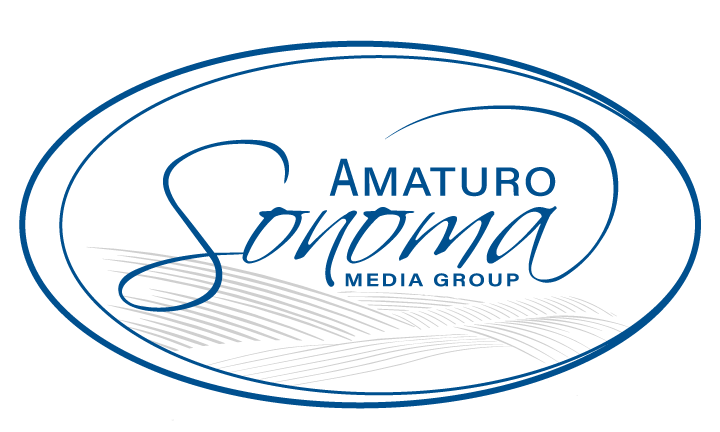Advertising is totally unnecessary. Unless you hope to make money. – Jef I. Richards
When did people start advertising goods and services to each other?
A long, long time ago, as it turns out; commercial messages were common in ancient civilizations around the world. Before we wrote them down, we cried them out in the streets.
Advertising is crucial to the health of any business. “Build it and they will come” may be a nice dream, but if they don’t know it’s there, how will they know where to go?
Those of us with a background in advertising still find the array of options dazzling and disorienting. If you started a business because you are passionate about baking, welding, basket-weaving or water bottles, chances are that you could use a quick overview of what’s out there.
In this Advertising 101 series we will give a brief introduction to the most common advertising channels, the different types of advertisements businesses can utilize and a few tips to help you plan your own advertising strategy.
May we present in no particular order, the following channels of advertising:
1. Broadcast Media

Probably the oldest advertising channels are broadcast media. A town crier shouting in the street was casting (his voice) abroad, and today’s broadcast channels similarly put the word out for people to listen to – or not, as they wish.
Broadcast media also fall under the umbrella of “traditional media.” There are two main forms of broadcasting available to modern advertisers: television and radio.
Picture broadcast advertising like that ancient town crier, or like tossing a handful of seeds across a patch of soil. You say your piece, send it out there, and let it do its thing.
Radio and television advertising have many advantages. One of the primary benefits of using these media to broadcast your business is that they both allow for the use of the human voice. Like the human touch, the human voice is unique in its ability to connect us to each other. We start hearing our mother’s voice before we are born, and many experts say that hearing is the last sense we lose.
 Like touch, the human voice gives us a sense of connection.
Like touch, the human voice gives us a sense of connection.
For conveying emotion, tugging on your audience’s heart strings and creating a sense of comradery, include broadcast advertising in your master strategy.
Finally, broadcast media is still one of the best ways to cast a broad net, reaching the greatest number of people for what amounts to very little effort. Pair this large audience with an effective message and you will see results.
2. Print Media
Print media is exactly what it sounds like – printed! When you advertise in a newspaper, newsletter, magazine or journal you are using print media. Along with broadcast media, print media falls under the “traditional” umbrella.

People have been advertising their businesses in “print” ever since writing was developed. Like television and radio, print can be used to reach a large number of potential customers (although perhaps not as large as at one time).
Because print is a visual medium you can incorporate images into your advertising – logos, pictures of locations or food, graphs or charts. You can also communicate more information in print (fine print at the bottom of a magazine ad as opposed to the auctioneer-style disclaimers in radio commercials) which makes it an effective channel for complex issues or products.
Although print advertising is losing market share, it can still be an effective tool in your overall strategy. Use it for detailed communication, to promote events or product launches or to show off a visually stunning item.
3. Support Media
Look, I didn’t make up the names for these.
Support media has nothing to do with shapewear or financial contributions. Instead, it refers to advertising channels that are best used to supplement an already vigorous advertising plan.

Billboards, bus panels and phone directories are good examples of support media. By nature they don’t convey an entire message well; you might see them for a handful of seconds during your commute, or find them when you are already searching for the items you need.
You should use support media as a sort of “see, here we are!” for potential customers. Once upon a time this meant a listing in the phone book; now, you should make sure that your business listing on Google, Yelp and the like is accurate and up-to-date.
Branding is another good use of support media. Realtors know this and plaster their face across every bus in the neighborhood in the hopes that their name comes to mind when someone wants to sell a house.
4. Direct
Direct advertising is like broadcast and print in that it can reach large audiences, but instead of just being there for people to find and hear it gets delivered directly to the consumer.

Direct mail, email marketing and telemarketing are all forms of direct advertising. Sometimes consumers may feel intruded upon by direct advertisements; many of us toss direct mail pieces in the recycling between door and desk, and I’ve never met a person who liked receiving unsolicited phone calls.
For certain industries and applications, however, direct mail is still a dependable staple in the marketing toolbox, and email marketing, if done correctly, can effectively drive traffic and sales.
The biggest advantage of any direct advertising method is that it keeps your business consistently top-of-mind. Seasonal and high-ticket companies often use these techniques.
5. Internet

Online marketing – it feels like another universe with its own rules sometimes. When you advertise on the internet you can control who your message goes to, like with direct advertising; you can incorporate video, audio and graphic elements as well as convey almost unlimited amounts of information, advantages normally associated with more traditional media.
Advertising online has the added advantage of being relatively accessible. In a few hours you can have an ad approved and running on Google, without having to mess with advertising agencies, artists, and up-front payments running into thousands of dollars.
The other side, of course, is that online advertising is literally that easy for everyone.
Advertising digitally, on websites, search engines, smart phones and social media, comes with its own challenges. There is the issue of standing out in a field crowded with everyone in your industry, and the fact that many consumers use ad blocking software (due to the same crowding). As a practice, online advertising can only just legally drink, and is still a rapidly evolving space.
Sometimes a company will pour all its money into digital ads, only to realize a few year later that traditional media might be more cost-effective. And the vast array of options and variables, while offering incredible opportunities, can easily become a maze where business owners and marketing professionals alike get lost in the inconsequential.
All that aside, digital advertising is easily the most exciting item on this list. In terms of potential, it’s nearly unlimited. And since we live in a society that conducts much of its business and social mingling online, it is crucial that any business have a good online presence and invest in deliberate, quality online advertising.
Internet advertising should be part of any 21st century advertising strategy. Pair it with more traditional channels to increase frequency, use it to follow up on direct advertising efforts and incorporate it into a broader branding campaign.
If your business could benefit from more online visibility and you want to make a significant investment in the medium, it is worth it to partner with digital experts. The rapidly-changing nature of internet ads means that an effective strategy is hands-on and flexible. New opportunities are always on the horizon, but not every technology is created equal. Someone who speaks the language can help determine which of the seductive options are useful in your specific case.
6. Social media
Social media advertising is really more of a subset of internet, but it comes with its own nuance. While straight up internet ads can be seen as the online equivalent of print and support media, or even television advertising, social media ads enter new territory. It’s more like popping into a gathering of friends and handing out flyers to your nail salon than anything else. And since that would be pretty obnoxious in real life, social media advertising requires a level of finesse to be effective.
Highly targeted ads can put your product right in front of someone who is incredibly likely to be interested. When someone is already interested in getting their nails done, popping into their brunch date with a demonstration is less annoying and might even be welcome! (Ok, so not a perfect analogy. That’s still creepy.)

“Hate to interrupt your chat but can I interest any of you in a 2-for-1 shoe sale?” – Social Media Ads
Without getting into all the details, this is what you should take away: social media advertising is full of potential, and if you aren’t doing it well you are probably tossing your money into the trash.
There you have it – your inexhaustive overview of the different channels available when you go to advertise your business. No wonder it can feel so complicated!
Have questions about advertising? Our media experts are always happy to sit down and help you analyze your advertising needs and the different ways you can reach your business goals. Contact us today!

